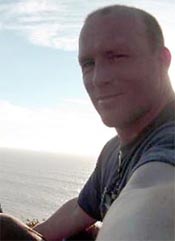
I’m sorry to report that yesterday’s post about disease-causing organisms in ocean water is only half the story: there’s also disease-causing chemicals out there, too.
Now I realize that in the back of pretty much everyone’s minds, there’s the knowledge that ocean water contains nasty chemicals. So I won’t take a lot of your time here – I’ll just remind you of a few names to keep track of.
Lead and mercury aside, most can be neatly tied up in one or a few generic terms: organochlorines, polyhalogenated aromatic hydrocarbons, polychlorinated biphenyls. Big names like DDT, dioxin, and PCBs fit into one or more of those categories. But as with microbes, it’s pretty difficult to keep the subcategories straight: what’s the difference between PCDD, PCDF, PBDE, PCN, or the murky-sounding DBP, or “chlorination disinfection byproducts”? HFINo***
But again, we can count ourselves lucky to have people who do know the difference – and who are getting pretty good at measuring it. A couple of recent studies did the math all the way through to estimating roughly how much of these chemicals a typical seafood-enjoyer ingests.
For instance, a typical Catalonian hombre might eat 1.53 nanograms of polychlorinated naphthalenes (PCN) in a day – more if he eats a lot of salmon or sole and less if he prefers shrimp or cuttlefish. A Belgian study analyzed “market baskets,” comparing the chemical contamination of many typical foods. Fish topped the list of most contaminated, with PBDE levels nearly twice as high as the second place (dairy and eggs). Fast food was a distant third, with steak and chicken breast registering even safer. The authors noted one exceptional salmon filet that raised the bar, coming in with a PBDE concentration five times the seafood average and nearly an order of magnitude above second place.
In eastern U.S. fish markets, you can find more than 20 times as much PCB and PBDE in wild bluefish as you can in farmed salmon (and wild salmon had only half as much of these chemicals as farmed salmon).
That may sound like yet another plug for wild salmon, but then again, consider the wildness of your salmon’s homeland. Does it cavort in essentially urban waters like Portland’s Columbia River or the Nisqually estuary south of Seattle? Because if it does, it’s likely to pick up PCBs, DDTs and PAHs from runoff.
Young chinook salmon heading out to sea from the Duwamish Estuary, the Columbia River and Yaquina Bay had PCB levels in NOAA fisheries’ red zone – above 2,400 nanograms per gram of fat. (I imagine it has been argued that as these salmon grow up in relatively pure open ocean waters, those levels will come back down. But still.)
It’s also curious that coho salmon sampled from the same locations as the chinooks were consistently less contaminated – by factors of 2-5. Sounds like a mystery for the ecologists to solve.
There’s still the question of how much and how steady of a diet of these compounds one needs before cancer sets in. Part of the trouble lies in toxicity differences among the many compounds (called congeners) that are contained within the categories I listed at the top of this increasingly glum post. Unfortunately, for almost every one of those thousands of congeners, we just don’t know specific toxicity levels.
Well, if it’s any comfort to you, all those omega-III fatty acids are still really good for you.
Image: Alaska’s Wildlife. Thanks to SeaWeb for the tips.
***HFINo = HellifIknow




[…] biphenyls, or PCBs, are perennial bad guys in environmental stories (see previous scribblings about salmon, seabirds and […]